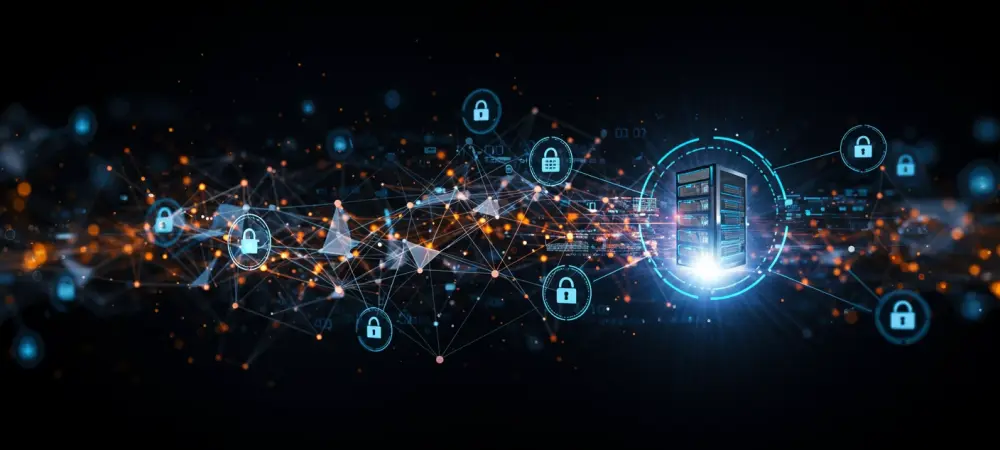Dominic Jainy is a distinguished IT professional recognized for his expertise in artificial intelligence, machine learning, and blockchain. With a keen interest in exploring the applications of emerging technologies across diverse industries, Dominic offers a unique insight into the world of cybersecurity threats and defenses. As we delve into recent developments in the cybersecurity landscape, Dominic shares his expert perspective on various threats and their implications.
Can you explain the significance of the “Threat of the Week” regarding the U.S. disruption of North Korean IT worker schemes?
The disruption of North Korean IT worker schemes by U.S. authorities is a significant blow to their illicit activities. North Korea has been using IT workers disguised with fake or stolen identities to infiltrate numerous U.S. companies. Once inside, they not only earn salaries but also steal sensitive data and virtual currencies. One of the more notable cases involved over $900,000 stolen from a blockchain company in Atlanta. Coordinated actions have led to arrests and the seizure of financial accounts, highlighting the severe security and financial risks posed by such schemes.
What are the cybersecurity implications of the newly exploited Chrome 0-Day vulnerabilities?
Discovering a 0-Day vulnerability in Chrome underscores the persistent risks in even the most widely-used applications. A type confusion flaw can disrupt program execution and was actively exploited in targeted attacks. Google reacted promptly with security patches, emphasizing the importance of quick responsiveness to such vulnerabilities. This situation reinforces the necessity for users to routinely update their software to mitigate potential threats from these vulnerabilities.
What impact do the U.S. sanctions against the Russian bulletproof hosting provider Aeza have on cybersecurity?
U.S. sanctions against Aeza Group and its subsidiaries affect the cybersecurity landscape by disrupting the infrastructure that supports cybercriminal activities, such as hosting services for malware distribution and illicit marketplaces. Bulletproof hosting providers like Aeza allow cybercriminals to operate with relative anonymity. By targeting these operations, law enforcement can reduce the capacity of malicious actors to launch attacks, although the fight against such resilient operations is ongoing.
How did the notorious threat actor NightEagle utilize zero-day exploit chains to target Chinese sectors?
NightEagle leveraged a zero-day exploit chain targeting Microsoft’s Exchange servers, affecting China’s AI and military sectors. By using sophisticated tactics like delivering Go-based utilities to exfiltrate data from mailboxes, they’ve demonstrated advanced capabilities in staying hidden within networks, stealing sensitive information, and sustaining prolonged access. These attacks focus on sectors with high-value data, indicating the strategic importance of the infiltrated information.
Describe how North Korea’s BlueNoroff threat actors are targeting crypto businesses with macOS malware.
BlueNoroff has adopted clever strategies by impersonating trusted contacts through platforms like Telegram to trick victims into downloading Nim malware under the guise of legitimate updates, like fake Zoom installers. This malware targets macOS users in crypto businesses, stealing browser credentials and sensitive application data. The combination of social engineering and malware deployment reflects the sophistication in modern cyber attacks targeting financial technologies.
How do newly discovered vulnerabilities, such as trending CVEs, pose risks to various systems?
Common Vulnerabilities and Exposures (CVEs) are critical identifiers for cyber threats, as they highlight weaknesses that hackers can exploit. Once a CVE is disclosed, actors may exploit it within hours, necessitating rapid patching from affected systems to prevent breaches. Organizations must stay vigilant about applying updates and patches promptly to shield against these vulnerabilities effectively.
What are the potential privacy risks associated with China-linked VPN apps found on Apple and Google app stores?
China-linked VPN apps can compromise user privacy by funneling data through networks that may be accessible to Chinese authorities due to local laws. Users of these apps risk borrowing their data and online activities to external parties. To mitigate these risks, users should conduct thorough research on VPN providers, prefer those with clear privacy policies, and ensure their geographical data jurisdiction aligns with their privacy expectations.
In what ways are improperly secured Linux servers being targeted for cryptocurrency mining and DDoS attacks?
Attackers often target Linux servers with poor security, exploiting weak SSH credentials to deploy cryptocurrency mining scripts and integrate the servers into DDoS botnets. Unauthorized access can lead to resource exhaustion and performance degradation, while DDoS attacks affect server availability. Server owners must enforce strong security measures, such as using complex passwords, auditing access logs, and applying necessary patches, to safeguard against these threats.
What strategies did the Iranian Intelligence Group 13 employ to conduct cyber espionage and sabotage?
Intelligence Group 13 focuses on cyber espionage and sabotage by targeting SCADA systems, which control critical industrial operations. Compromising these systems can have severe implications, including operational disruptions and safety hazards. The group’s tactics are a testament to the evolving nature of cyber warfare, where strategic infrastructure becomes a primary target, blending cyber operations with traditional state interests.
Do you have any advice for our readers?
Stay informed and proactive in cybersecurity matters. Regularly update your systems, use strong, unique passwords, and adopt a holistic approach to secure digital assets. Awareness and prompt action are vital in minimizing risks and safeguarding personal and organizational information in this constantly evolving cyber landscape.

